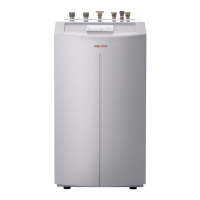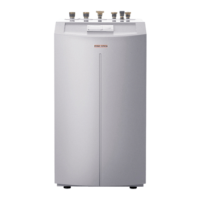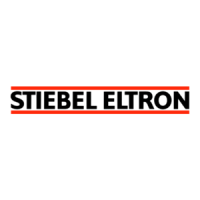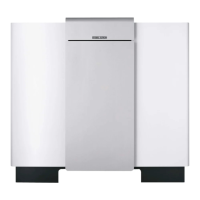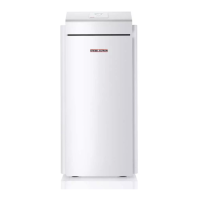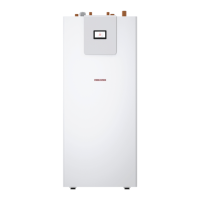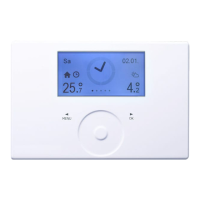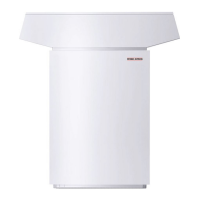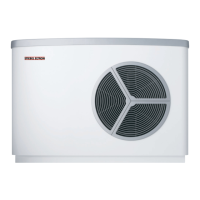INSTALLATION
Mounting
22 | WPF basic www.stiebel-eltron.com
10.4.4 Checking the heat source flow rate
The heat source flow rate is set via the temperature differential of
the heat source circuit.
Calculate the temperature differential. For this, operate the
appliance in heating mode or DHW mode.
Max. temperature differential of heat source circuit
6
1
2
5
4
3
2
1
-5 0 5 10 15 20
84�03�01�0017
Y Max. temperature differential [K]
X Source inlet temperature [°C]
1 Heating flow 35 °C
2 Heating flow 50 °C
Note
You can check the source outlet temperature on the heat
pump manager display under system parameter TEM-
PERATURES.
10.5 Heating water connection
The heat pump heating system must be installed by a qualified
contractor in accordance with the water installation drawings that
are part of the technical documents.
Thoroughly flush the pipework before connecting the heat
pump. Foreign bodies, such as welding beads, rust, sand,
sealant, etc. can impair the operational reliability of the heat
pump.
Connect the heat pump on the hot water side. Check for
tightness.
Ensure the correct connection of the heating flow and return.
Provide thermal insulation in accordance with applicable regu-
lations.
For sizing the heating circuit, note the maximum available external
pressure differential.
10.6 Oxygen diffusion
!
Material losses
Avoid open vented heating systems and underfloor heat-
ing systems with plastic pipes which are permeable to
oxygen.
In underfloor heating systems with plastic pipes that are per-
meable to oxygen and in open vented heating systems, oxygen
diffusion may lead to corrosion on the steel components of the
heating system (e.g.on the indirect coil of the DHW cylinder, on
buffer cylinders, steel radiators or steel pipes).
In the event of oxygenation, separate the heating system be-
tween the heating circuit and the buffer cylinder.
!
Material losses
The products of corrosion (e.g.rusty sludge) can set-
tle in the heating system components, which may re-
sult in a lower output or fault shutdowns due to reduced
cross-sections.
10.7 Filling the heating system
Fill the heating system via the drain.
26�03�01�1606
1
1 Drain, heating side
Water quality
A fill water analysis must be carried out before the system is
filled. This may, for example, be requested from the relevant water
supply utility.
!
Material losses
To avoid damage as a result of scaling, it may be neces-
sary to soften or desalinate the fill water. The fill water
limits specified in chapter "Specification / Data table"
must always be observed.
Recheck these limits 8-12 weeks after commission-
ing and as part of the annual system maintenance.
Note
With a conductivity >1000μS/cm, desalination treatment
is recommended in order to avoid corrosion.
Note
Suitable appliances for water softening and desalinating,
as well as for charging and flushing heating systems, can
be obtained via trade suppliers.
Note
If you treat the fill water with inhibitors or additives, the
same limits as for desalination apply.
10.8 Venting the heating system
Vent the pipework carefully.
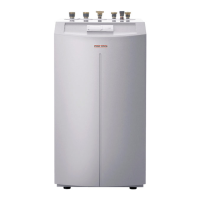
